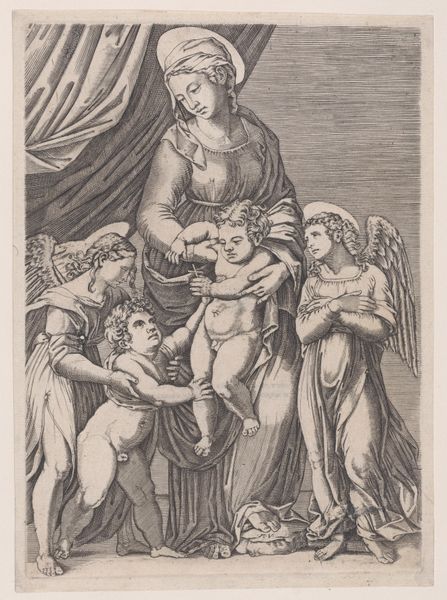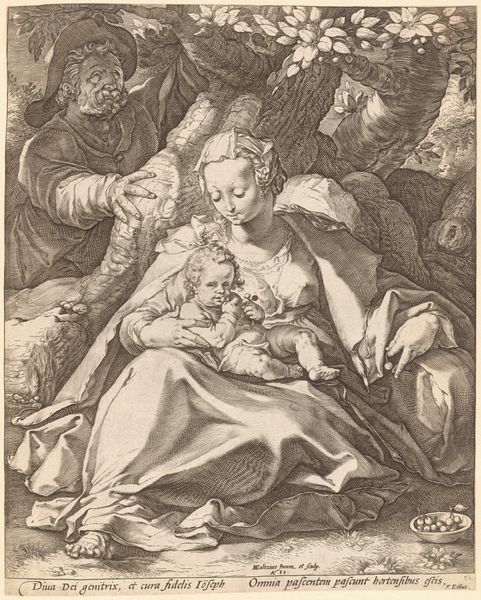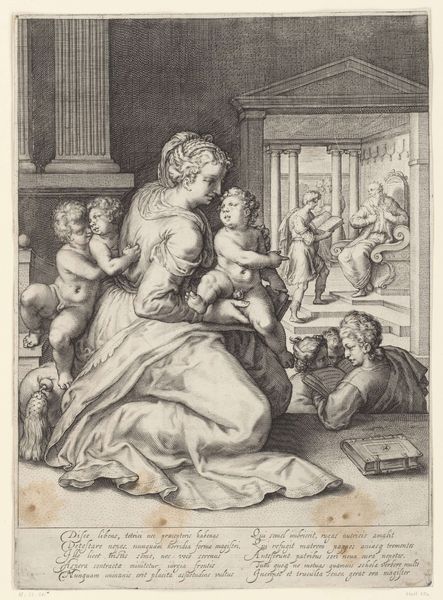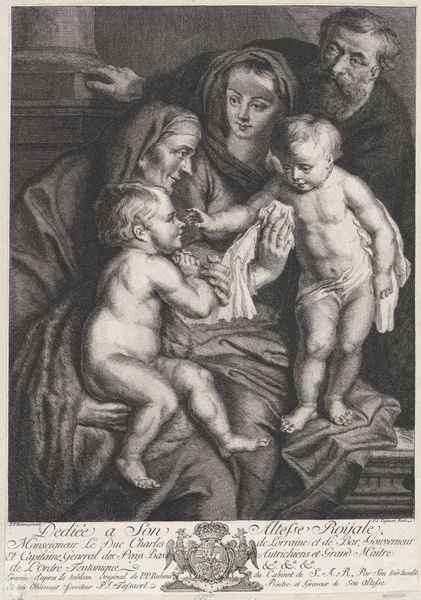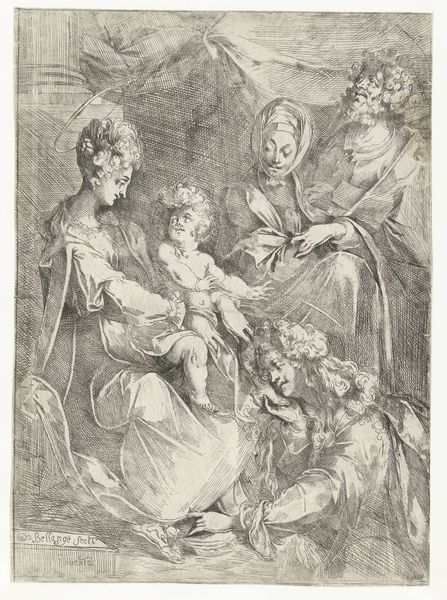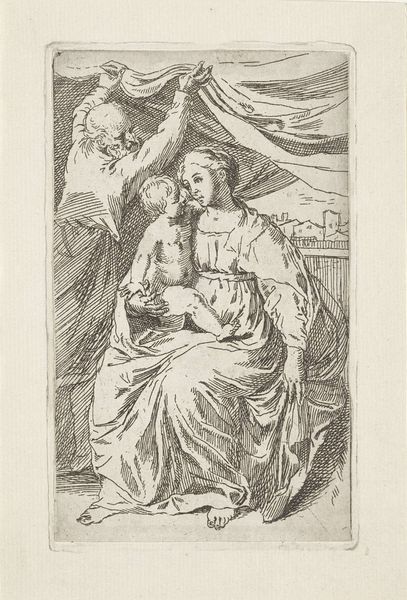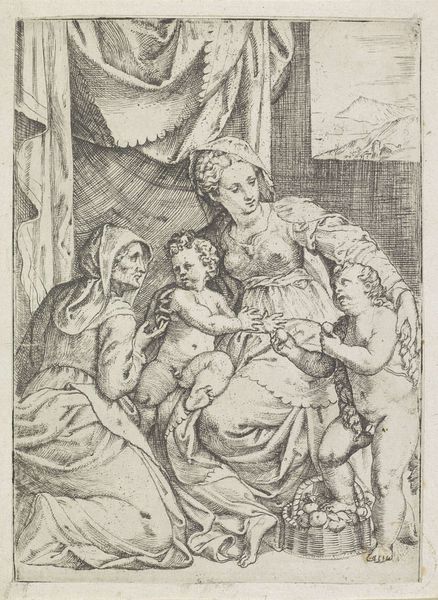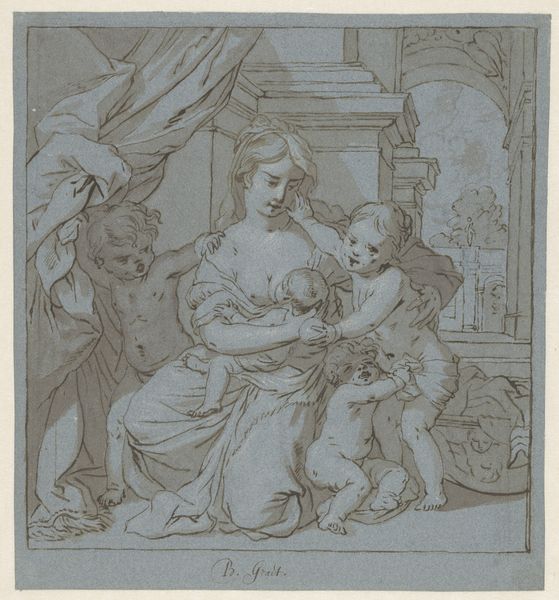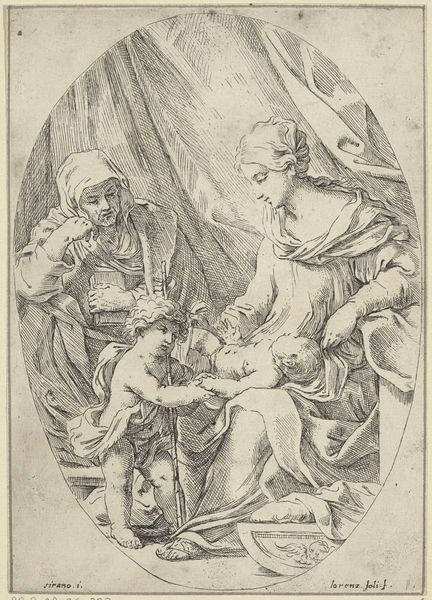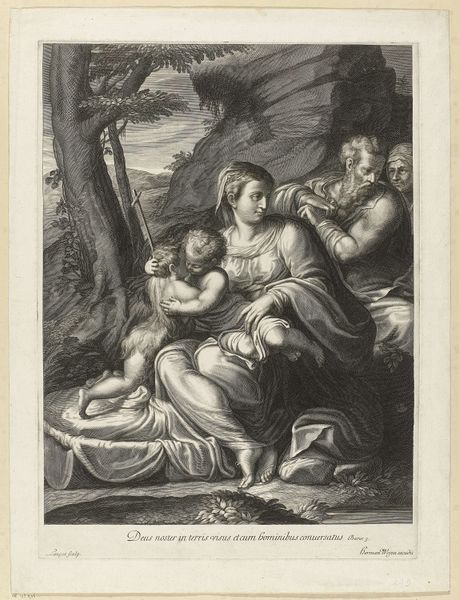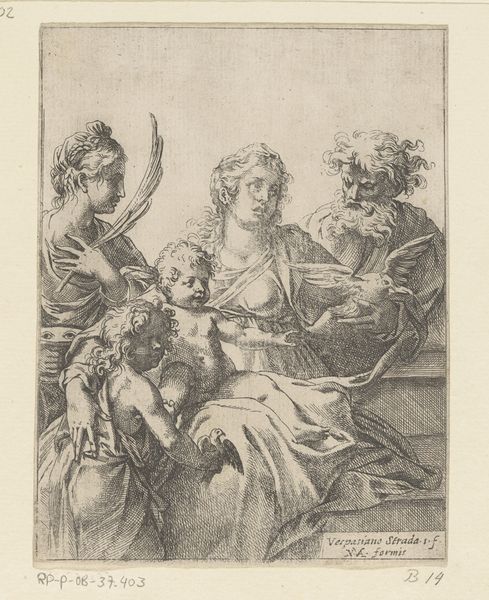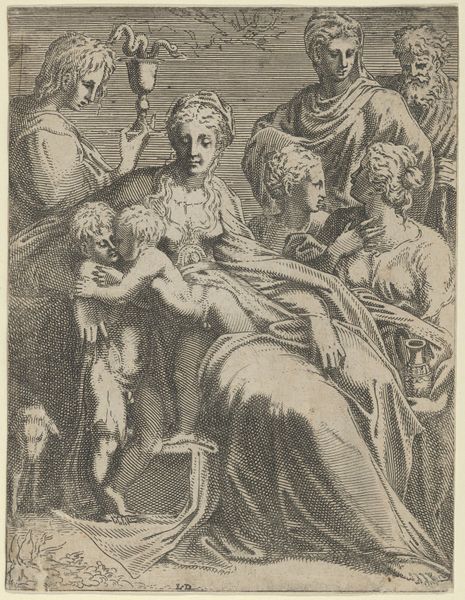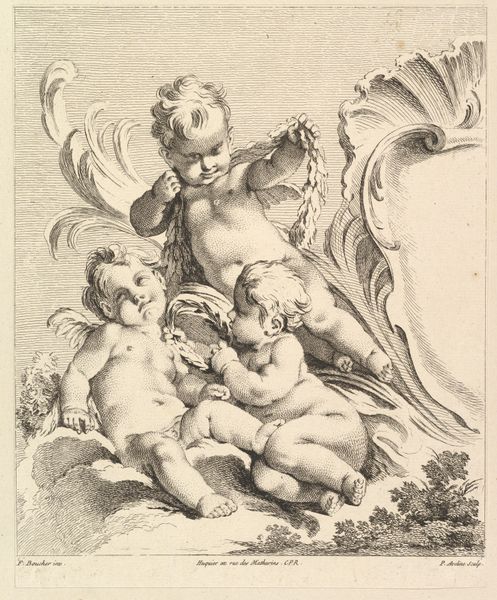
Maria met Kind zittend op de grond en Johannes als kind en drie kleine engelen 1635 - 1679
0:00
0:00
print, engraving
#
baroque
# print
#
pen illustration
#
figuration
#
group-portraits
#
engraving
Dimensions: height 419 mm, width 329 mm
Copyright: Rijks Museum: Open Domain
Editor: This is an engraving by Hendrick Danckerts, dating from around 1635 to 1679, called "Maria met Kind zittend op de grond en Johannes als kind en drie kleine engelen." What strikes me is the strong use of line and the texture he achieves solely through this medium. What do you see in this piece, focusing on its formal aspects? Curator: Focusing on the internal logic of the work, one is compelled to observe the expert handling of light and shadow. The artist modulates tone solely through the density and direction of engraved lines, creating volume and depth. The drapery, for instance, gains palpable presence through contrasting areas of high density marks and open space, a sophisticated semiotic deployment of dark and light. Notice also how he creates interest using a range of different kinds of marks. What of the composition strikes you? Editor: The figures create a pyramid shape in the center, the dark background sort of blurring or blending it, whereas at the lower portion it is almost scattered. Does that compositional element create any particular feelings for the viewer? Curator: Consider how that dispersal below also directs the eye toward textual aspects—And. del Sarto Pinx / H.D. sculp. The strategic placement underscores the work’s genesis as an engraving, calling attention to its constructed nature and its purpose as reproduction and interpretation of another artistic vision rather than, necessarily, direct affect. Further thought on negative space can yield a greater understanding here. Editor: I see. By highlighting these inscriptions at the bottom with greater details, it almost transforms it from art to artefact in that moment, with symbolic importance over aesthetic. Thanks for the explanation of the formal choices at play here. Curator: Indeed. Paying closer attention to internal arrangements can provide new methods to perceive and apprehend a work beyond conventional historicism.
Comments
No comments
Be the first to comment and join the conversation on the ultimate creative platform.
